For the opportunity to review the Tokina AT-X PRO lens SD 12-24 F4 (IF) DX II Aspherical N/AIS many thanks to Alexey Melnikov – http://www.photomlyn.com.ua/
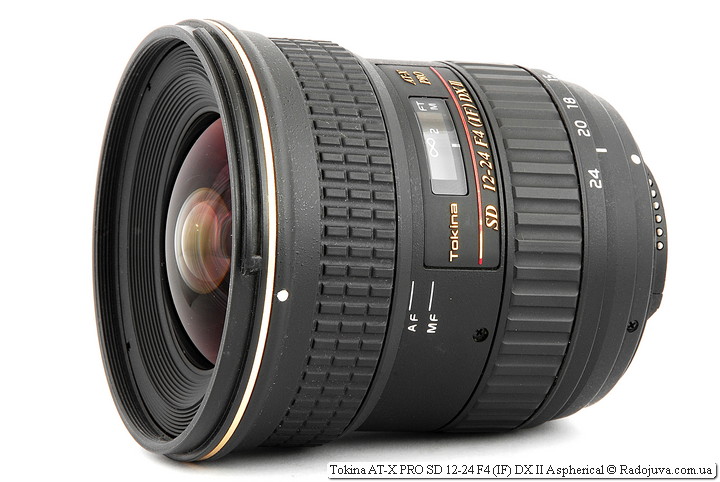
Tokina AT-X PRO SD 12-24 F4 (IF) DX II Aspherical
Main technical characteristics of Tokina AT-X PRO SD 12-24 F4 (IF) DX II Aspherical N / AIS
| The name of the instance from the review (as it is written on the lens itself) | Tokina AT-X PRO SD 12-24 F4 (IF) DX II Aspherical N/AIS 8337392 JAPAN |
| Basic properties |
|
| Front Filter Diameter | 77 mm |
| Focal length | 12-24 mm EGF for Nikon DX cameras is 18-36 mm |
| Zoom ratio | 2 x |
| Designed by | for Nikon APS-C digital cameras |
| Number of aperture blades | 9 rounded petals |
| Tags | window with focusing distance in meters and feet, focal lengths for 12, 15, 18, 20, 24 mm, bayonet mount mark. Hood Attachment Mark |
| Diaphragm | from f / 4 over the entire range of focal lengths to f / 22 |
| MDF (minimum focusing distance) | 0.3 m, the maximum magnification ratio is reached by 24 mm and is 1: 8 |
| The weight | 540 g |
| Optical design | 13 elements in 11 groups. The scheme includes 1 low dispersion element (shown in blue on the optical diagram), as well as 2 aspherical element (shown in pink on the optical scheme, Tokina P-MO hybrid aspherical elements are used). The presence of such elements is indicated on the body by the abbreviations 'SD' (Super Low Dispersion) and Aspherical.
Most likely, the same optical scheme is used by lenses:
|
| Lens hood | BH-777 |
| Manufacturer country | JAPAN |
| Period | It was produced since September 2008 (the time for the cessation of production is unknown). Now the lens is no longer produced and is an archive model. Subsequently replaced by a model Tokina 128 AT-X Pro SD 12-28mm F4 (IF) DX Aspherical. |
| Price |
Attention: there are two versions of the lens Tokina AT-X 124. The first one is: Tokina AT-X 124 PRO DX AF 12-24mm f / 4 and the second presented in this review: Tokina AT-X 124 PRO DX II 12-24mm f / 4. The main differences between the versions are the presence of a built-in focusing motor and the quality of the enlightenment of the optics.
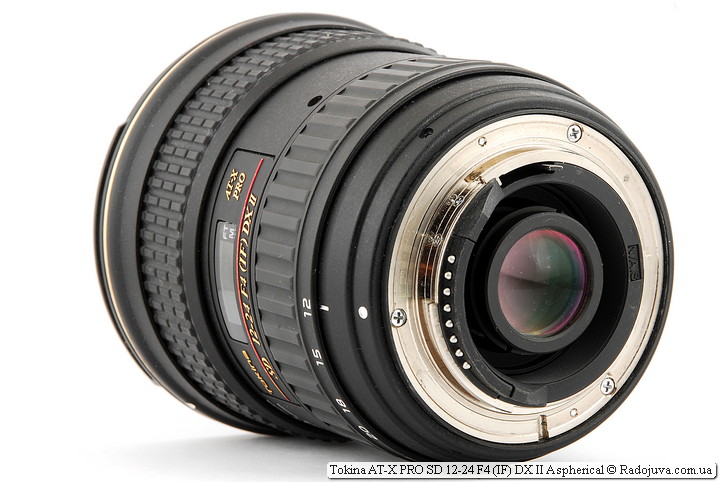
Tokina AT-X PRO SD 12-24 F4 (IF) DX II Aspherical
Version Tokina AT-X 124 PRO DX AF does not have a built-in focus motor and will not work on younger cameras without a focus motor (see exact list) Tokina AT-X 124 PRO Version Dx ii has a built-in micro focus motor and will focus on any Nikon digital SLR camera. I tested my copy on a non-powered camera Nikon D40on which there were no problems with focusing.
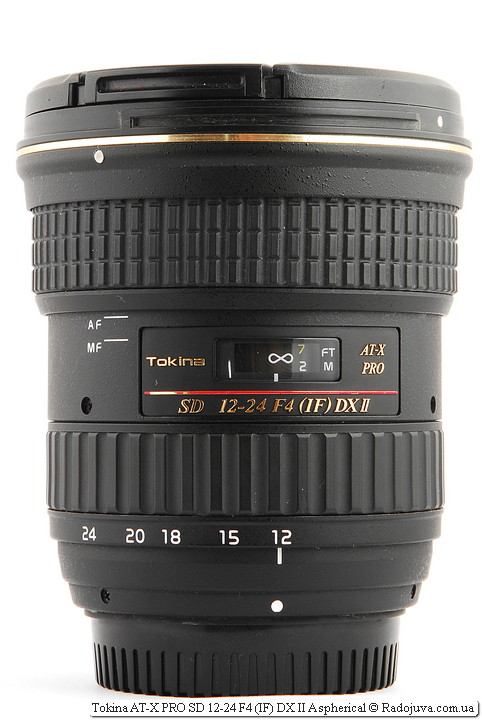
Tokina AT-X PRO SD 12-24 F4 (IF) DX II Aspherical
Let’s take a look at the lens designations:
tokina AT-X Pro (Advanced Technology - EXbetween PROfessional) - indicates the high quality of lens manufacturing, the PRO (professional) prefix adds information that the lens is part of Tokina's professional lens line. 124 are simply lens designations. Most interestingly, the Tokina AT-X 124 PRO DX II 12-24mm F4 lens really shows an excellent professional level of build and image quality. The lens has a plastic body with a metal mount. The build quality is very high. To me it was nice to work with the lens.
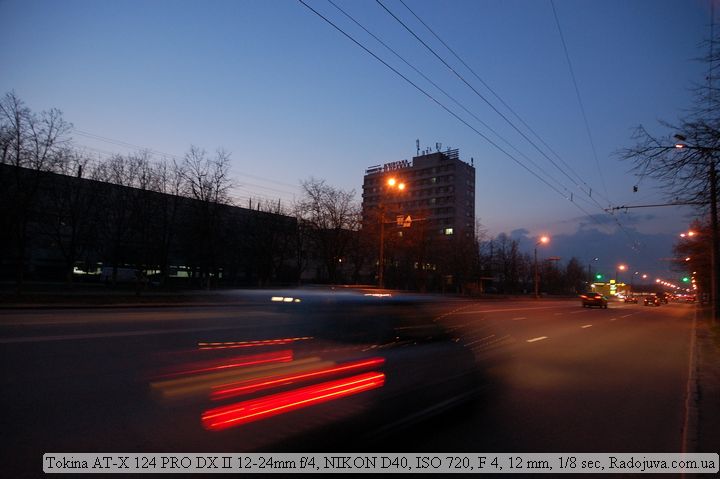
Photo on Tokina AT-X 124 PRO DX II 12-24 mm f 4 for Nikon
DX - indicates that the lens Only suitable for Nikon DX APS-C cameras (cameras with a cropped sensor), and is not recommended for use on Nikon full-frame FX cameras.
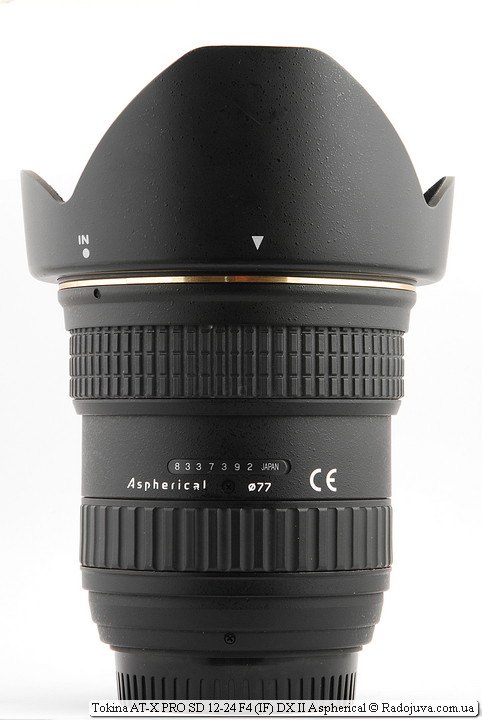
Tokina AT-X PRO SD 12-24 F4 (IF) DX II Aspherical with hood
12-24mm - focal length. But when used on Nikon DX cameras, the lens will give the same angle of view as an 18-35mm lens on a full frame. The lens gives a very wide view, in fact, this is what makes it interesting.
Here Highlights Tokina AT-X 124 PRO DX IIto pay attention to:
1. The lens is only suitable for Nikon DX cropped cameras; on the crop, the lens gives a very wide viewing angle. A wider angle can give only a few lenses.
2. During a change in focal length, the front lens moves in a wave-like fashion, but does not go beyond the lens mount ring, and therefore does not increase the overall dimensions of the lens. The maximum lens recess is available at 16 mm focal length. The front lens is moved as close as possible to the edge of the frame rim by 24 mm focal length. We can say that the lens has an internal zoom. When changing the focal length, the rear lens moves.
3. And also, the lens has an internal focusing system. When focusing, neither the front nor the rear element moves. This is a good indicator that will allow you to conveniently use all kinds of filters.
4. Tokina has a very convenient switch between manual and automatic focusing. The focusing ring is close to the front lens, which is quite convenient. The same ring serves as a focus mode switch. To switch the lens from automatic focusing mode to manual focusing, just pull this ring towards you, towards the camera mount. When focusing manually, the ring rotates 90 degrees, the movement of the ring is very smooth. MDF is only 30 cm.
5. The lens has a huge diameter front lens. You need to use 77 mm filters, which are not the cheapest. The front lens is very convex.
6. The lens has a constant maximum aperture of F / 4.0 at any focal length. For example, on a whale lens, the maximum aperture value changes when zooming. Tokina has excellent aperture F / 4.0 at all zoom levels from 12 to 24 mm. A good indicator is 9 aperture blades. On a closed aperture, you can easily achieve the effect of a star with 18 rays.
7. The autofocusing speed is average. At wide angle, focus is almost always set to infinity, i.e. average focus speed is not that important. Infinity, according to the focusing distance indicator, begins after 2 meters. Yes, the lens has a classic focusing distance scale. Personally, when shooting sample photos in this review, I used manual and automatic focusing 50/50.
8. Comes with a great lens lens hood, which can be mounted on the lens in the opposite direction, thereby providing the opportunity to always take it with you. Attention: mount the lens hood correctly. If you do not set the hood exactly according to the marks, you can get strong vignetting.
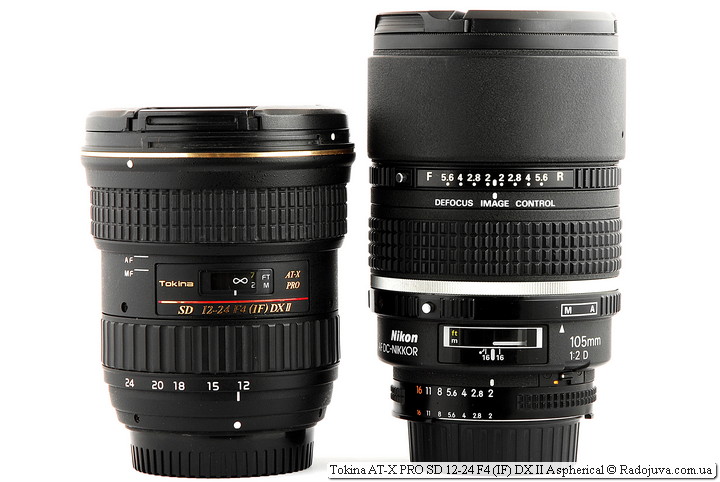
Sizes of Tokina AT-X PRO SD 12-24 F4 (IF) DX II Aspherical and Nikon AF DC-Nikkor 105mm 1: 2 D Defocus Image Control
Image quality
Tokina AT-X 124 PRO DX II 12-24 mm I was very pleased. The lens gives excellent sharpness already at F / 4.0, the sharpness becomes maximum at F / 8.0-F / 11.0. The lens does not have much distortion (as for a lens of this class). The contrast of the lens is excellent. Tokina AT-X 124 PRO DX II 12-24mm well tolerates back and side light. Gives a normal color rendition. Another weakness is the strong 12 mm vignetting and F / 4.0. Lightweight vignette retained flesh up to F / 11.0. Also, HA quite strong, even at /F8.0. When making a conclusion about quality, you need to remember that this is a wide-angle lens, which is very, very difficult to do without the above flaws.
Sample photos on Fujifilm FinePix S5 Pro
All photos in the gallery below were taken with the legendary camera Fujifilm FinePix S5 Pro (Nikon F mount).
Original photos in JPEG format ('.jpg') can be view / download from this link (gallery on GOOGLE DRIVE, 50+ photos).
Original photos in format RAW ('.RAF') can view / download from this link (gallery on GOOGLE DRIVE, 40+ photos).
Sample photos on Nikon D40
All photos were taken on Nikon D40 to RAW, conversion using ViewNX 2 to JPEG, reduced to 1600 * 1200, imprinted data from EXIF module. Photos without processing. All photos were shot using protective filter. The filter does not affect vignetting.
Sample photos on Nikon D90
All photos in the gallery below were taken on Nikon D90 to RAW, conversion using Capture NX-D 2 to JPEG, reduced to 2048 * 11360, imprinted data from EXIF module. Photos without processing. All photos were shot using protective filter.
You can see more photos from this lens here.
Sample photos on Nikon D90
And some more photos from the working shoot:
My experience
Overall, the Tokina AT-X PRO SD 12-24 F4 (IF) DX II Aspherical is an excellent lens. If you also look at its cost, then it becomes just wonderful.
The lens is no worse than native Nikon 12-24mm f / 4G.
Prices
Real prices for Tokina AT-X PRO SD 12-24 F4 (IF) DX II Aspherical lens can see here, or in the price block below:

Tokina AT-X PRO SD 12-24 F4 (IF) DX II Aspherical on camera Fujifilm FinePix S5 Pro
Alternatives
Below is a list of all ultra-wide angle lenses with auto focus support for cameras with an APS-C sensor (crop Kf = 1.5-1.6X) whose focal length is less than or equal to 14 mm.
Tokina (for different mounts):
With moderate aperture:
- Tokina 124 AT-X PRO SD 12-24 mm F4 (IF) DX Aspherical, for Nikon F, Canon EFS
- promaster Digital af 12-24 XR EDO F4 Aspherical, previous lens under the 'ProMaster' brand
- Tokina 124 AT-X PRO SD 12-24 mm F4(IF)DX II aspherical, for Nikon F, Canon EFS
- Tokina 128 AT-X Pro SD 12-28 mm F4 (IF) DX Aspherical, for Nikon F, Canon EFS
- Tokina AT-X PRO SD 12-28 F4 (IF) DX V, Canon EFS only
Aperture:
- Tokina AT-X PRO SD 11-16 F2.8 (IF) DX ASPHERICAL, since 2007, for Nikon F, Canon EFS, Sony A
- Tokina AT-X PRO SD 11-16 F2.8(IF)DX II ASPHERICAL, since 2008, for Nikon F, Canon EFS, Sony A
- Tokina AT-X PRO SD 11-16 F2.8 (IF) DX V, for Nikon F, Canon EFS
- Tokina atx-i 11-16mm F2.8CF, since 2019, for Nikon F, Canon EFS, black/white
- Tokina atx-m 11-18mm F2.8E, since 2022, for Sony E, black/white
- Tokina AT-X PRO SD 11-20 F2.8 (IF) DX ASPHERICAL, from 2014, for Nikon F, Canon EFS
- Tokina atx-i 11-20mm F2.8CF, since 2020, for Nikon F, Canon EFS, black/white
- Tokina AT-X PRO SD 14-20mm F2 (IF) DX, from 2015, for Nikon F, Canon EFS
fisheye:
- Tokina 107 Fisheye 10-17 mm F3.5-4.5DX AT-X, for Nikon F, Canon EFS
- Tokina 107 Fisheye 10-17 mm F3.5-4.5 DX NH AT-X, for Nikon F, Canon EFS
- Tokina 107 Fisheye 10-17 F3.5-4.5 DX AT-X V NH, Canon EFS only
Tamron (for different mounts):
- Tamron SP 10-24 mm 1: 3.5-4.5 Di II B001, from October 2008, for Nikon F, Canon EFS, Pentax K, Sony A. Japan / China / Vietnam
- Tamron 10-24 mm F/3.5-4.5 Diii VC HLD-B023, from February 2017, for Nikon F and Canon EFS
- Tamron Aspherical LD DI II SP AF 11-18 mm 1: 4.5-5.6 [IF] A13, since 2005, for Nikon F, Canon EFS, Sony A. Konica Minolta AF DT Zoom 11-18mm 1: 4.5 (22) -5.6 D and Sony 4.5-5.6 / 11-18 DT (SAL1118) lenses are built on the same optical scheme )
- Promaster Digital EDO AF Aspherical LD (IF) 11-18 mm 1: 4.5-5.6, previous lens under the 'ProMaster' brand
- Tamron 11-20 mm F / 2.8 Di III-A RXD B060, from April 2021, only for Sony E
Sigma (for different mounts):
- Sigma 4.5 mm 1: 2.8 EX DC HSM CIRCULAR FISHEYE, since 2007 for Canon EFS, Sigma SA and Nikon F. Since 2008 for Pentax K and Sony / Minolta A
- Sigma 10 mm 1: 2.8 DC FISHEYE HSM, from 2007 for Canon EFS, Sigma SA and Nikon F. In 2008 a version for Pentax K and Sony / Minolta A was released
- Sigma 8-16 mm 1:4.5-5.6 DC HSM, since 2010, Canon EFS, Nikon F, Pentax K, Sigma SA, Sony/Minolta A
- Sigma 10-20 mm 1: 4-5.6 DC EX [+ -HSM, + -D], since 2005 for Canon EFS, Sigma SA, Nikon F, Pentax K and Sony / Minolta A. Since 2008 for 4/3 SLR system. 'D' prefix for select Nikon and Sony / Minolta A only. HSM motor only available for Canon EFS, Sigma SA, Nikon F and 4/3. The Pentax K and Sony / Minolta A versions have a different appearance (there is no focusing distance window). There are two sub-versions: with a matte finish and with a velvet finish on the body.
- Sigma 10-20 mm 1: 3.5 DC HSM EX, since 2009, for Canon EFS, Nikon F, Pentax K, Sigma SA, Sony / Minolta A
- SIGMA 10-18 mm 1:2.8 DC DN C, from 2023, for Sony E, FujiFilm X and Leica L
Nikon DX (for Nikon F mount):
- Nikon DX AF Fisheye Nikkor 10.5 mm 1: 2.8G ED
- Nikon DX VR AF-P Nikkor 10-20 mm 1: 4.5-5.6G
- Nikon DX AF-S Nikkor 10-24 mm 1: 3.5-4.5G ED SWM IF Aspherical
- Nikon DX AF-S Nikkor 12-24 mm 1: 4G ED SWM IF Aspherical
- Nikon Nikkor ZDX 12-28mm 1:3.5-5.6PZ VR
Canon EF-S / EF-M
EF-S (Mirror APS-C)
EF-M (Mirrorless APS-C)
RF-S (mirrorless APS-C)
Pentax DA (+ Samsung / Schneider-Kreuznach, for Pentax K mount):
- SMC Pentax-DA 1: 2.8 (22) 14 mm ED [IF] (Pentax 14)
- SMC Pentax-DA FISH-EYE 1: 3.5-4.5 10-17 mm ED [IF] (Pentax 10-17) (FISHEYE, most likely optically identical Tokina Model 107)
- HD Pentax-DA FISH-EYE 1: 3.5-4.5 10-17 mm (FISHEYE, most likely optically similar to Tokina 107 NH)
- HD PENTAX-DA * 1: 2.8 11-18 mm ED DC AW
- SMC Pentax-DA 1: 4 12-24 mm ED AL [IF] (Pentax 12-24) (most likely optically identical Tokina Model 124)
- Samsung Zoom Lens Fisheye D-Xenon 10-17 mm 1: 3.5-4.5 AL, copy Pentax 10-17optical scheme from Tokina Model 107
- Samsung Zoom Lens D-Xenon 1: 4 12-24 mm ED ALcopy Pentax 12-24optical scheme from Tokina Model 124
- Schneider-Kreuznach D-Xenogon 1: 3.5-4.5 10-17 mm ED AL, copy Pentax 10-17optical scheme from Tokina Model 107
- Schneider-Kreuznach D-Xenon 1: 4 12-24 mm ED AL, copy Pentax 12-24optical scheme from Tokina Model 124
Sony / Minolta (A or E):
E-mount (E):
- Sony E 4 /10-18 OSS (2012)
- Sony E 4 /10-20G PZ (2022)
- Sony E 1.8 /11 (2022)
A-mount (A):
- Sony 4.5-5.6 /11-18 DT (SAL1118) (most likely optically identical Tamron model a13)
- Konica Minolta AF DT Zoom 11-18 mm 1: 4.5 (22) -5.6 D (most likely optically identical Tamron model a13)
Samsung NX
- Samsung Lens 1: 3.5 10 mm Fisheye
- Samsung Lens 1: 4-5.6 12-24 mm ED I-FUNCTION
Fujifilm x
- FUJINON ASPHERICAL LENS SUPER EBC XF 8 mm 1:3.5RWR
- FUJINON ASPHERICAL LENS SUPER EBC XF 14 mm 1: 2.8 R
- FUJINON ASPHERICAL LENS NANO-GI XF 8-16 mm 1: 2.8 R LM WR
- FUJINON ASPHERICAL LENS SUPER EBC XF 10-24 mm 1: 4 R OIS
- FUJINON ASPHERICAL LENS SUPER EBC XF 10-24 mm 1: 4 R OIS WR
Zeiss (E / X)
- ZEISS Distagon Touit 2.8 /12 T* (Sony E-mount, Fujifilm X-mount)
VILTROX (E/X/Z)
- Viltrox AF 13mm 1: 1.4 STM ASPH ED IF C (2021, Sony E-mount, Fujifilm X-mount, Nikon Z-mount)
Leica CL/TL/T/L
- Leica SUPER-VARIO-ELMAR-T 1: 3.5-4.5 /11-23 ASPH. (2014)
- Leica SUPER-VARIO-ELMAR-TL 1: 3.5-4.5 /11-23 ASPH. (2014)
Samyang (E / X)
- Samyang AF 12/2E + Samyang AF 12/2X (2021, Sony E-mount, Fujifilm X-mount)
Yongnuo (E/X/Z)
Yongnuo 11mm 1:1.8 DA DSM WL S/X/Z (2023, Sony E-mount, Fujifilm X-mount, Nikon Z-mount)
Do you know more similar lenses? Or do you have experience with any of them? Then be sure to share your thoughts in the comments.
Hack and predictor Aviator
The Tokina AT-X PRO SD 12-24 F4 (IF) DX II Aspherical is a good wide-angle zoom lens that has excellent sharpness but suffers from severe vignetting. Autofocus will work on any Nikon camera. The Tokina AT-X 124 PRO DX II is a pleasure to work with. I highly recommend Ultra Wide Tokina Lenses as an excellent replacement for original similar lenses.
Now there is an update for Tokina AT-X PRO SD 12-24 F4 (IF) DX II Aspherical in the face of the new Tokina 128 AT-X Pro SD 12-28 F4 (IF) DX Aspherical.
Material prepared Arkady Shapoval. Training/Consultations | Youtube | Facebook | Instagram | Twitter | Telegram


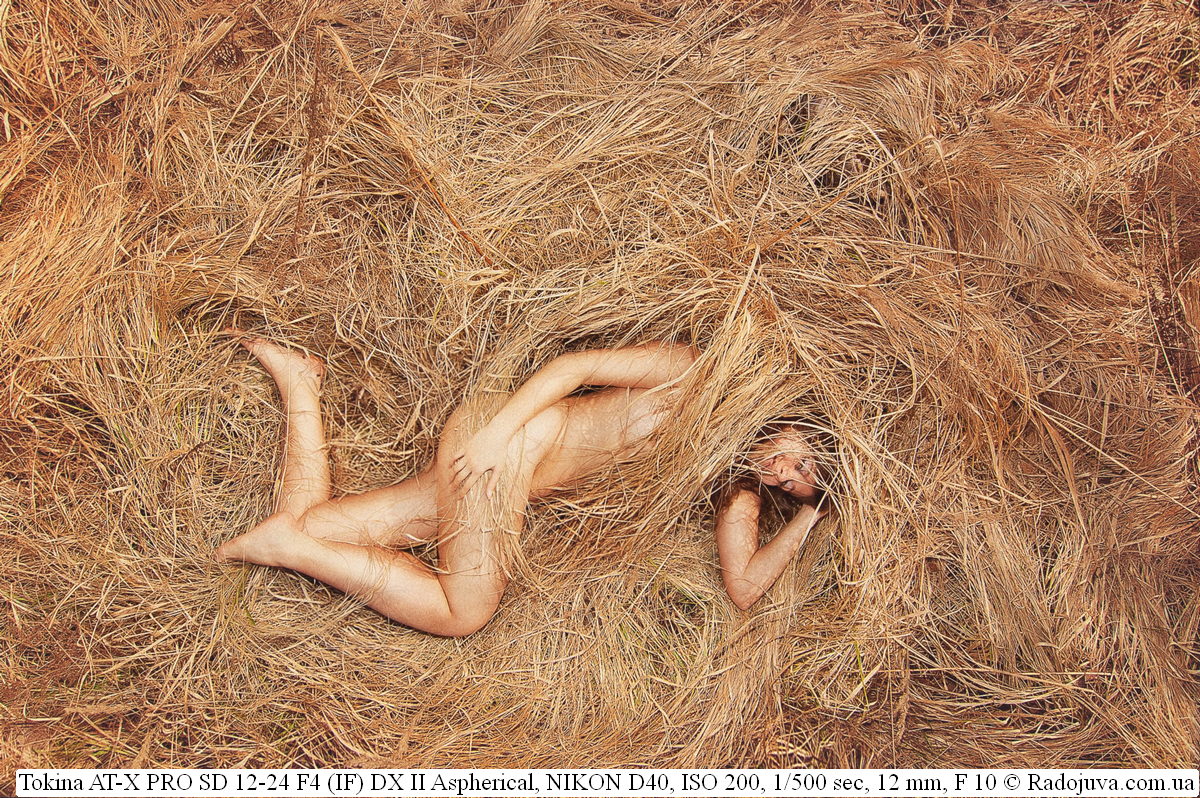
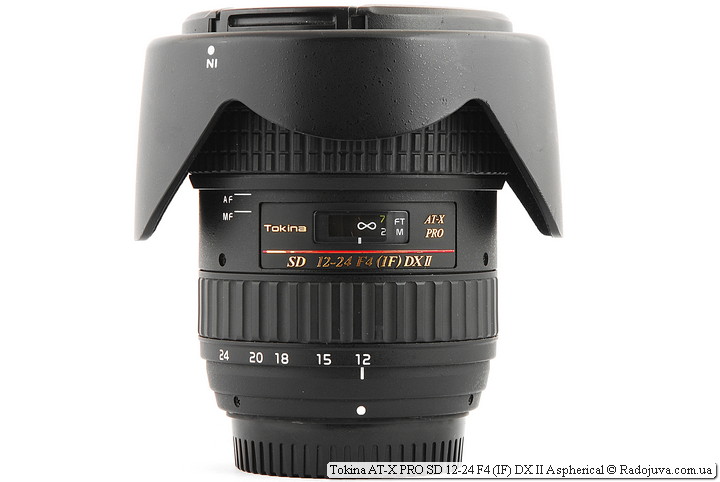
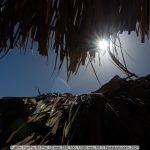
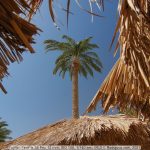









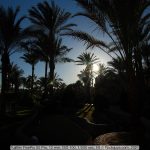
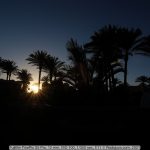
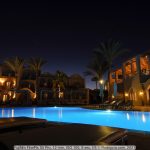



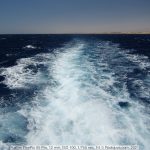
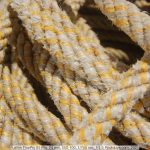
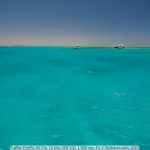
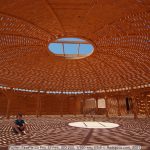

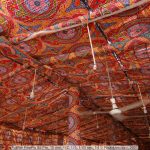

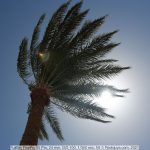














































Arkady, tell Tokin 12-24: made in Japan or Hong Kong, how critical?
The difference in price is $ 100. Does it make sense to overpay?
I hope for your opinion.
I apologize for the late answer: all Tokina lenses are made in Japan (by the way, all Sigma lenses, unlike Canon and Nikon), and Hong Kong does not have any factory for the production of these objects and never has been. And such labeling is connected with the fact that in order to optimize income, I use the offshore zone of Hong Kong, that is, say, from Japan they will send objects without a back cover to Hong Kong, and this is already considered a component and not a final product, that is, there is no need to be taxed when importing to Hong Kong (or with a bayonet on three bolts unscrewed or not yet screwed on, by the way), and after "fine-tuning" the goods will receive the marking "Made in Hong Kong", and will no longer be taxed when imported to China, where Tokina and all other manufacturers sell almost half of their products.
The reviewer is mediocre, in general here it fully corresponds to the level of the photographs presented (even for an amateur - so-so, but for puffing "head-on" on the pictures with a girl, so in general cameras should be taken away, not to mention a bunch of other jambs ...)
It seems that everything is stated in sufficient detail. If you do not like something, you need to write what it is. Or are you so, troll?
Arkadiy
Dyakoy for a wonderful look)))
at the words “But still, Tokina AF 11-16mm f / 2.8 AT-X PRO DX is the flagship among ...”
Link pomilkovo on Tokina AT-X 124 PRO DX II 12-24 mm f / 4 for Nikon.
Fixed
Thanks for the review! On Nikon D90, both fit? d1 and d2? is there a difference in price?
both fit, there is a difference in price.
a comparison of 24mm Tokins with Nikon 24-120 / 4 can be seen here
http://vmirefoto.blogspot.ca/2014/01/nikon-af-s-24-120mm-f4g-ed-vr-ii-2.html
Tell the newbie. Which would be better? I choose a lens to replace the whale 18-105 on the D5100. I noticed Tokina AT-X 124 PRO DX II 12-24 mm f / 4 for Nikon and Nikon 16-85mm f / 3.5-5.6G ED VR AF-S DX Nikkor
Basically, I rent the interiors of cafes and restaurants for the site-catalog of restaurants in the city.
Or maybe you advise something else to consider?
Hello Arkady! All your reviews are very, very interesting. I have an optics park: 50mm f1.4, 85mm f1.8, 24-85 f2.8-4 But here I had a question about wide angle, I like to take landscapes, but I can’t get a lot of fun with Nikor 24-85 f2.8-4 . So I think what to choose Tokina 11-16mm f / 2.8 AT-X Pro DX or Sigma 10-20mm f / 3.5 EX DC HSM? There are almost no recent reviews. The first problem with auto focus and backlight, distortion and coma is higher than that of Sigma (http://aflenses.ru/id/1239). The sigma has less aperture, though how much it is needed ... but the aperture blades are 7 ... and it seems like proceeding from the same (http://aflenses.ru/id/1239) Sigma is better, but all this is indirect ... Tell me who you chose and why?
Despite the age of the commentary, I will correct - the book is called: Volkov-Lannit "The Art of a Photo-Portrait" and not a "Photo Reporter"
Tell me please. If you wind the protective filter and polarizing. Will there be vignetting?
Dear friends! Two friends, wonderful photographers, Gennady Koposov and Lev Sherstennikov have “13 Commandments of a Photographer”. I have no doubt that you know them. The 11th commandment says - IF LOOKING AT THE PICTURE, THE VIEWER TALKED ABOUT THE PAPER QUALITY, FORGET THAT WAS SPEAKED ABOUT PHOTOGRAPHY. Let's admire Henri Cartier-Bresson's photos. Try to get Volkov-Lannit's book “The Art of Photojournalism” I can only say - “AH” I had pictures taken by CHANGE SYMBOL. I was not believed that these pictures were taken with this particular camera. Do not think that I am against your discussions !!! No no! LET PEOPLE CARRY PHOTOS THAT WILL PLEASE THEIR HEARTS! Wish you all the best! Sincerely, Mikhail.
Michael, and what is the meaning of all this verbiage?
Thanks for the reviews. But I can not choose what is better to take Tokina AT-X PRO SD 12-24 F4 (IF) DX or Sigma Zoom 17-50mm 1: 2.8 EX DC OS HSM. needed for work not for amateur photography.
Well, the first shirik (relatively dark), the second universal high-aperture, with all that it implies ..
in short is better second in your opinion?
Yes, and here it is better or worse when these are different lenses. The first is precisely the pronounced super-wideness with all the consequences - a huge viewing angle and distortion. The second is the versatile zoom.
and yet I tried it on the D700, I could not resist like it. maybe some kind of fur. parts can fail or fail?
Of course there are problems at the widest angle, but almost everything is removed in the editor.
ps to be honest, I tried it on FF since I haven't bought a lens for FF yet.
the lens is really very good.
Best regards, Alexander. (I read your everything!)
I got the impression that the difference between the first and second versions of 124 Tokina is not only in the presence of the motor. Despite the fact that the manufacturer has assured of the optical identity of the two versions, the second version shows a slightly higher resolution, but the first one - noticeably less chromatite. CA can be straightened in the converter when developing files, but I think that the smaller they are, the better.
From Sigma I would recommend the Sigma 8-16 / 4.5-5.6 DC HSM - it is optically great and has a unique 8mm wide focal length, but it is dark and cannot be filtered.
Actually, if you need a zoom super-wide on a crop with a screwdriver, then I would recommend the first version of 124 Tokins or Sigma 8-16
The lens is great. There is a vignette, there is a HA, but everything is wonderfully removed in the lightroom. Arkady has already written about this, I repeat - it is imperative to make sure that the lens hood is twisted exactly all the way, slightly under-twisted - there will be an unremovable vignette in the pictures, you will screw up the frames.
I also note that the front part of the lens (onto which the filters are screwed) is screwed to the main part with three massive and very short screws. So I have them unscrewed right on a hike in the mountains, all three, it is very easy to lose them. If you shake the lens and hear a characteristic rattle, it means that you have at least one screw unscrewed. I advise you not to forget about this, but immediately carefully screw it into place. Instead of the lost standard short screws, I screwed in a longer one of the same diameter - it turned out not quite aesthetically pleasing, but strong.
Tell me, can you give photos of this upgrade to see exactly how and where exactly they stand? thanks
Thanks, Arkady. Looks like your review determined my choice.
Hello! Please tell me how important is the role of the lens hood on such a wide lens? There is an opportunity to buy a first version but without a hood, I was looking for a hood on the Internet and could not find it. Where can I buy such a lens hood? Is there a third-party lens hood for this lens? thanks
Generally wide is important. because because of the wide viewing angle, the sun constantly strives to get into the frame. try on ali-express search
Recently acquired from hand. Thanks to a wide angle, I saw the world with an unusual width. Focal 12-15 mm show excellent sharpness throughout the frame, from 18-24 there is a subsidence in the corners. I didn’t notice any terrible HA. To avoid strong geometric distortions, I keep the horizon in the center of the lens.
Arkady, good day! I would like to ask if we compare two lenses of the first versions - Tokina 11-16 and 12-24, which one is preferable in terms of optical characteristics at short focal lengths? What would you prefer if you drop aperture? thanks
It will not be possible to discard the aperture, since 11-16 at F / 4 will be better than 12-24 in the range of 12-16. Of these two, I would take 11-16 because of a slightly wider angle. If money is not important, then 11-20 / 2.8 or 12-28 / 4 just right.
Thank you! I really appreciate your reviews!
“DX - indicates that the lens is only suitable for APS-C Nikon DX cameras (crop sensor cameras) and is not recommended for use on Nikon full-frame FX cameras. Also, this designation refers to the built-in focus motor. "
I'm embarrassed to ask how exactly the DX designation “speaks of the built-in focus motor”?
Fixed
Best memories of this lens. Used with Canon 50D and Canon 7D. For its price - fully justified itself. Reliable, sharp, comfortable. Of the shortcomings - only aperture ratio. I sold it with regret. Photo from it in natural size for example: https://nephritephoto.ru/wp-content/uploads/IMG_0710_to.jpg
Perfectly.
Hello, I am using the first version of this lens on Nikon D7000. Recently, such a jamb appeared, in shooting mode "A" aperture priority, the shutter does not work when the autofocus is on, it does not buzz loudly when the shutter button is pressed and does not take off. And in the mode offered in the camera modes "portrait", "landscape", etc. everything is clear, tell me what it can be connected with?
Instead of the native hood, the EW-83H is suitable for the lens, you just need to modify it a bit with a file:
- pry the latches with a screwdriver and pull out;
- Gently cut 10-12mm of the rails with a knife to tighten the hood.
At 12mm focal length, fixed vignetting, at 13mm it can be removed in Lightroom, at 14mm there is no vignetting.
For Tokina 116 I use Nikon's HB-23, the alteration is even smaller. No vignetting.
The lens hood was carefully modified with a file to completely eliminate vignetting.
Even retained its presentation.
Good afternoon. I use tokina 12-24 f4 dx on FX cameras and am very satisfied. 18-19 mm covers the entire frame. I want to ask those who know: does someone use it in full frame? Recently I found out in the instagram a photographer who also successfully uses it on the d750 and he has very little photos. I shoot mostly night Kiev in a closed aperture and with a slow shutter speed). A couple of days ago I bought a "muddy" 20 2.8d with mold apparently. The latter has a picture, but it also gives a “muddy” picture without saturation, so he started using both lenses, he decided to leave the tokin nevertheless, it is sharp and fully corresponds to a good width.
Colleagues, what can you say about the micro contrast of this Tokina 12-24 compared to his native Nikkor 12-24? (Based on the photo examples in the reviews, I got the impression that Nikkor is winning)
Interestingly, many owners of this lens do not have autofocus in LiveView mode? The slider shifts the focus to the closest position when half-pressing the shutter button and freezes in this position. In this case, the focus square on the screen is green. I tried it on d5200, d7000, d7100 - it doesn't work the same way. The viewfinder focuses perfectly. May depend on lens firmware and release time.
Third party vendor. Lottery.
I am experiencing the same problem. Were you able to solve this problem with autofocus, if so, please share your experience?